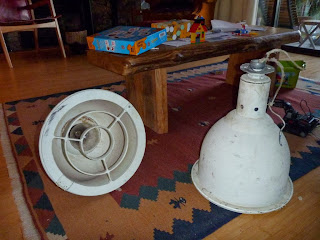The milling culminated in 4 re-sawn boards that were brought into the house to rest-up for a couple weeks while I was away on the course. Then a face was re-flattened (sent through the planer on the sled, trued up with a hand plane), and the oppposite face was sent through the planer. Edge joints were prepared and once the bookmatched panels were glued up, I reflattened by hand and the ends were flushed and squared by hand. Pretty sure the average non-woodworker has no idea how much time and effort it takes just to make a couple half decent planks.
Unlike the wall mounted module of the sideboard where I dovetailed the carcase, I wanted to explore a more production style carcase joint, for those instances where shop productivity counts. I settled on a miter, it lends itself to efficient joinery, and gives an unsurpassed grain wrap around the top and sides of the cabinet. A long carcase miter is also very easy to get wrong, so I did some much needed research.
There seems to be very little good information about how best to prepare a carcase miter. Probably because in theory it's such a simple joint that millwork shops prepare on a big sliding table saw. In my case, these panels were too deep for my miter guage/crosscut sled, and too wide for my rip fence, a common carcase conundrum in most small 1 man shops I'm sure. A method I came up with, which worked perfectly, was to put the table saw fence and sacrificial fence on the left of the (left-tilt) blade, and feed the work-piece along the sacrifial fence. Fool-proof. I set the height of the sacrifial fence about 1/8th above the work-piece height, and scribed a line to mark the work piece height on the sacrifial fence, then there's some adjusting of the height of the blade and the location of the fence using the scribed line as reference. I made a big cut to remove most of the waste, then a final fine pass. Use a nice sharp blade and wax up the table surfaces.
I read a suggestion to use a chamfer bit in the router table after removing most of the waste on the table saw, so I did, but the result wasn't as clean as the table saw, particulatly on end grain. There's a couple shop made shotting boards that people have made to hand plane the miter, but I have my doubts that the miters can be prepared acurately especially once the carcase pieces get to big to work properly on your bench.
Also a pic setting up the top and bottom for ploughing the tapered sliding dovetails for the partitions. The trusty router plane made short work of flattening the bottom of the dovetails and making them consistent accross both workpieces.



















































